If you think that raising a concrete patio is difficult, we’re here to prove you wrong. In this article, you’ll learn the easiest solution for raising concrete patios. It’s called polyjacking. We also teach you about other methods for raising or replacing concrete patios and why they don’t hit the mark compared to polyjacking.
Raising A Concrete Patio Using The Easiest Solution
The easiest solution to raising a sinking concrete patio is called polyjacking. Polyjacking is when experts pump polyurethane foam under your concrete through dime-sized holes until your patio is lifted back to level. Once the polyurethane foam is injected under your slab, it only takes 15 minutes for it to harden and cure. After that, you can immediately use your patio again.
Benefits Of Raising A Concrete Patio Using Polyjacking
- Polyjacking is fast – As we mentioned above, it only takes 15 minutes for the foam to harden and lift up your slab. After that, you can use your patio right away. That eliminates waiting for fresh concrete or a mudjacking slurry to dry.
- Polyjacking doesn’t require heavy machinery – The only thing needed to pump polyurethane foam under your patio is dime-sized holes. Once the foam is injected under your slab, the holes are patched, and any excess foam is clean off.
- Polyjacking foam is lightweight – Polyurethane foam only weighs around 2.5 to 4 pounds per cubic foot. The slurry used in mudjacking (which we will talk about more below) weighs about 100 pounds per cubic foot. This means that polyjacking foam won’t add to further settlement, while mudjacking slurry will.
- Polyjacking foam is non-toxic – The foam used for raising patios is non-toxic. It’s also inert. That means that the mixture used to create the polyurethane foam won’t leech into your soil or grass.
- Polyjacking is cost-effective – Both mudjacking and concrete replacement won’t solve the real issue of why your patio is sinking. Polyjacking foam won’t wash away when it comes in contact with water, making it a lasting solution that gives you your money’s worth.
- Polyjacking foam is waterproof – Once the foam is pumped underneath your patio, you don’t have to worry about water washing it away. It’s hydrophobic and will resist any water movement. But, you should still correct any poor drainage issues around your home. Otherwise, the dirt surrounding the foam could still wash away.
Read more: Are There Any Downsides To Sidewalk Lifting Foam?
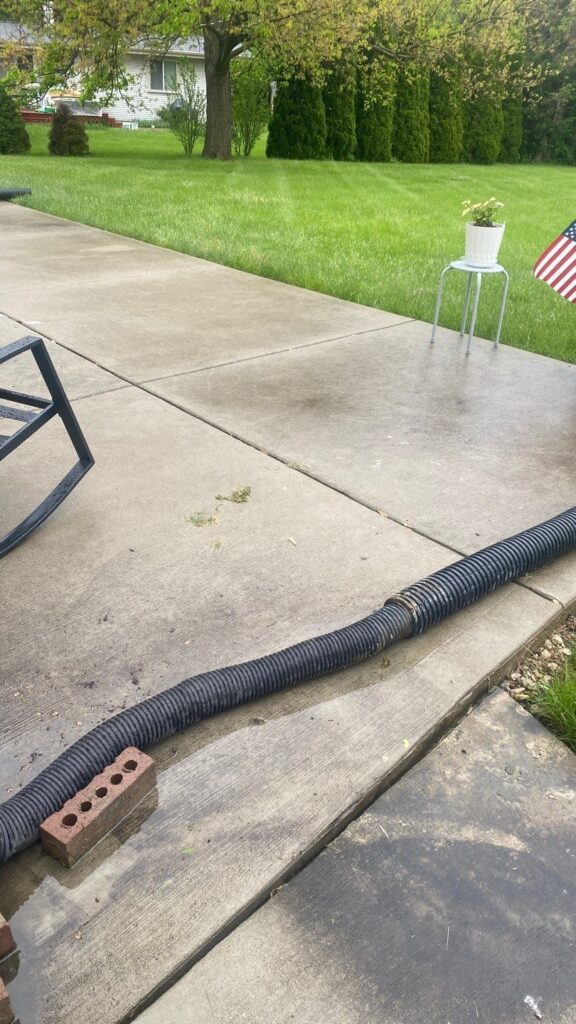
Raising A Concrete Patio Using Other Solutions
Mudjacking
Mudjacking is when sand, cement, and soil are combined together to create a slurry. This slurry is then pumped under your patio using 2-inch holes (compare that to the dime-sized holes needed for polyjacking). Mudjacking only lasts 2 to 5 years before another slurry injection is needed. Here are a few other downsides to mudjacking.
- Mudjacking slurry is heavy – As we mentioned above, mudjacking slurry weighs about 100 pounds per cubic foot. Adding that much weight below your patio will just cause it to sink again.
- Mudjacking is messy – Mudjacking involves hundreds of pounds of slurry, and if it were to spill or leak, you could be looking at a colossal cleanup process.
- Mudjacking can damage your concrete – We also mentioned that in order to pump the mudjacking foam under your slab, you’d need 2-inch holes. Those holes could actually crack your concrete and allow weeds to grow out of them.
- Mudjacking slurry is not waterproof – The next time it rains hard, the mudjacking slurry will wash out from under your patio.
- Mudjacking does not last – Mudjacked concrete needs at least 24 hours to dry and will only last 2 to 5 years. On the other hand, polyjacking foam can last indefinitely.
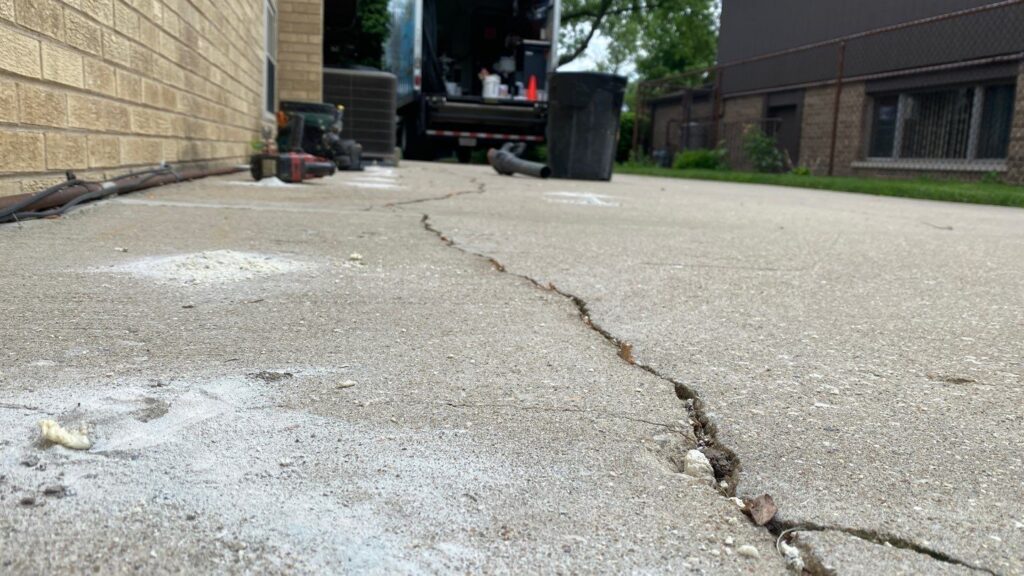
Replacing
- Breaking apart your old slab
- Hauling away the concrete.
- Clearing the area for the new concrete.
- Pouring the new slab.
- Waiting for it all to dry.
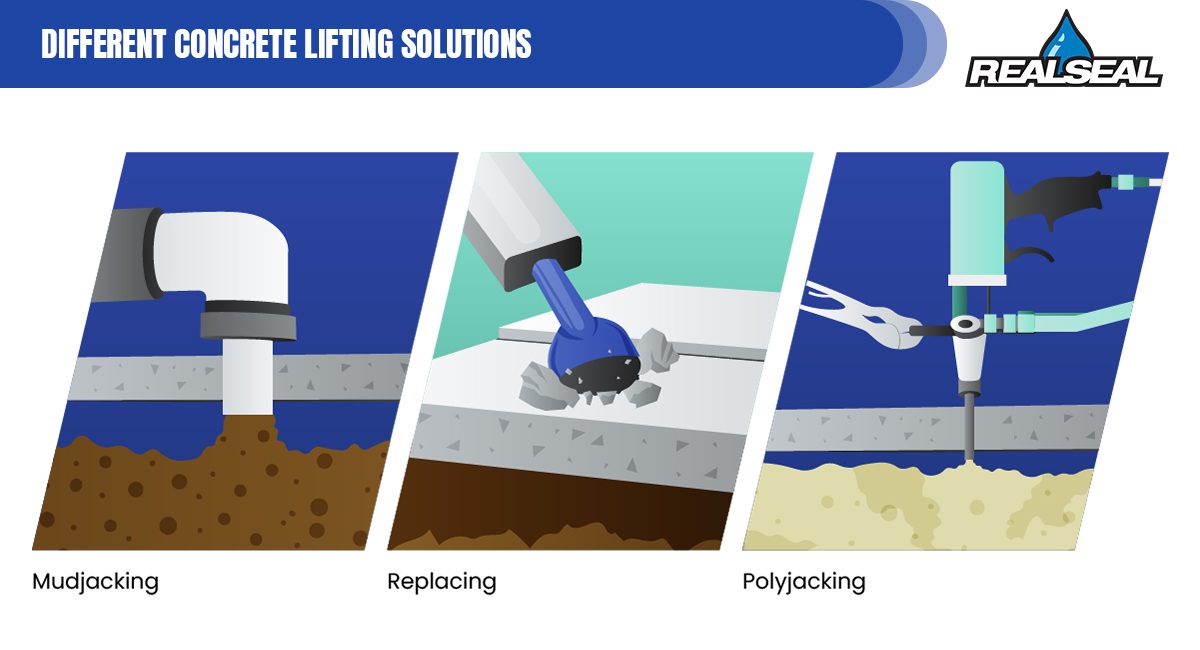
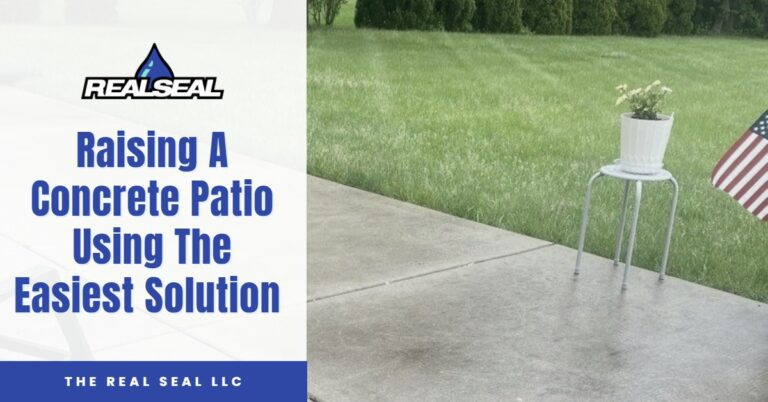
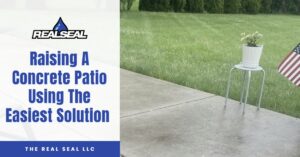
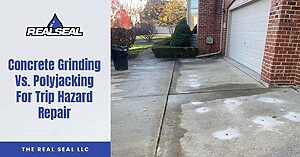
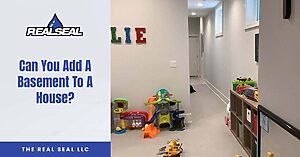
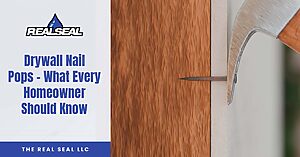
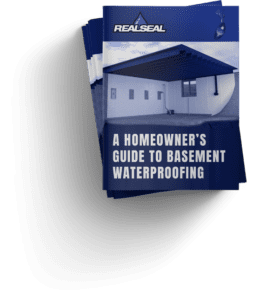

2 Responses
Raising a concrete patio can be easy with polyjacking. This method involves injecting polyurethane foam under the patio through small holes, lifting it back to level. Polyjacking is fast, requiring only 15 minutes to cure, and doesn’t need heavy machinery. It’s lightweight, non-toxic, waterproof, and cost-effective. Unlike mudjacking or replacing the patio, polyjacking provides a durable solution without the hassle and high costs, making it the ideal choice.
Quite right! Much better solution than Mudjacking.